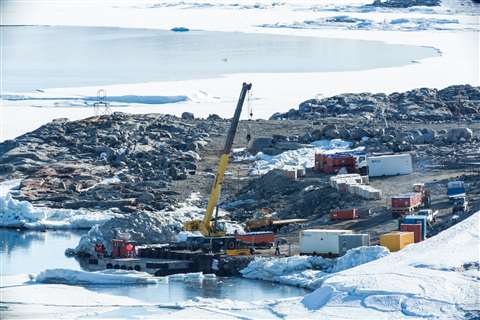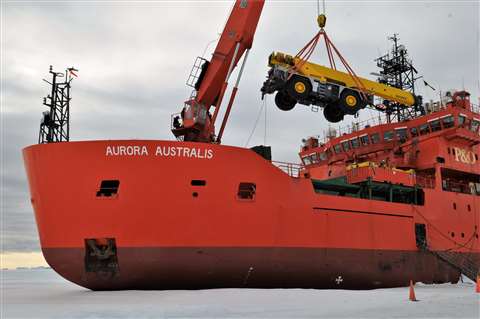Crane working at remote Antarctic site
05 March 2020
The Australian Government has deployed a Grove RT540E rough-terrain crane to work at Davis station, one of the four research stations in the Australian Antarctic Program. The RT540E joins five other Grove rough-terrain cranes at the site and is used to load and unload cargo for resupply at the stations, as well as construct and maintain the station’s infrastructure.

At the remote Antarctic site, the RT540E works in some of the harshest climates in the world. Davis station is the most southern station in the Australian Antarctic Program; temperatures at the station can drop down to -60 °C.
“The RT540E is a very resilient crane and we equipped it with the optional arctic weather package to enable it to work in temperatures down to a maximum of -40 °C.
“On station, operators use the crane at temperatures no lower than -20 °C,” said Federico Lovera, Manitowoc’s regional product manager for rough terrains.
The optional arctic weather package includes low viscosity synthetic oils and 240-volt heaters on the engine, batteries and hydraulic tanks to ensure smooth operation in the freezing climate.
The RT540E is a 35 tonne capacity crane with a 31m four-section main boom, plus an optional 7.9m-13.7m telescopic swingaway, which delivers a maximum tip height of 47m.
The Australian Antarctic Program investigates the role of Antarctica and the Southern Ocean in the global climate system.

Davis station supports the Australian Antarctic Program through a range of scientific research on climate, weather, ecosystems, ice and animals.
The six Grove cranes used by the Program are deployed across its three research stations, which are located in Davis, Mawson, and Casey. The cranes are typically used over the summer, when the conditions are better.
The stations also have mechanics on site to ensure the cranes are properly thawed and maintained. Typical service issues include making sure the tires don’t crack from the cold or melting snow that ingresses into the boom and cab to prevent issues with boom extensions or retraction ropes freezing into an ice block.
The cranes are returned to Australia every ten years for major inspection or replacement.




